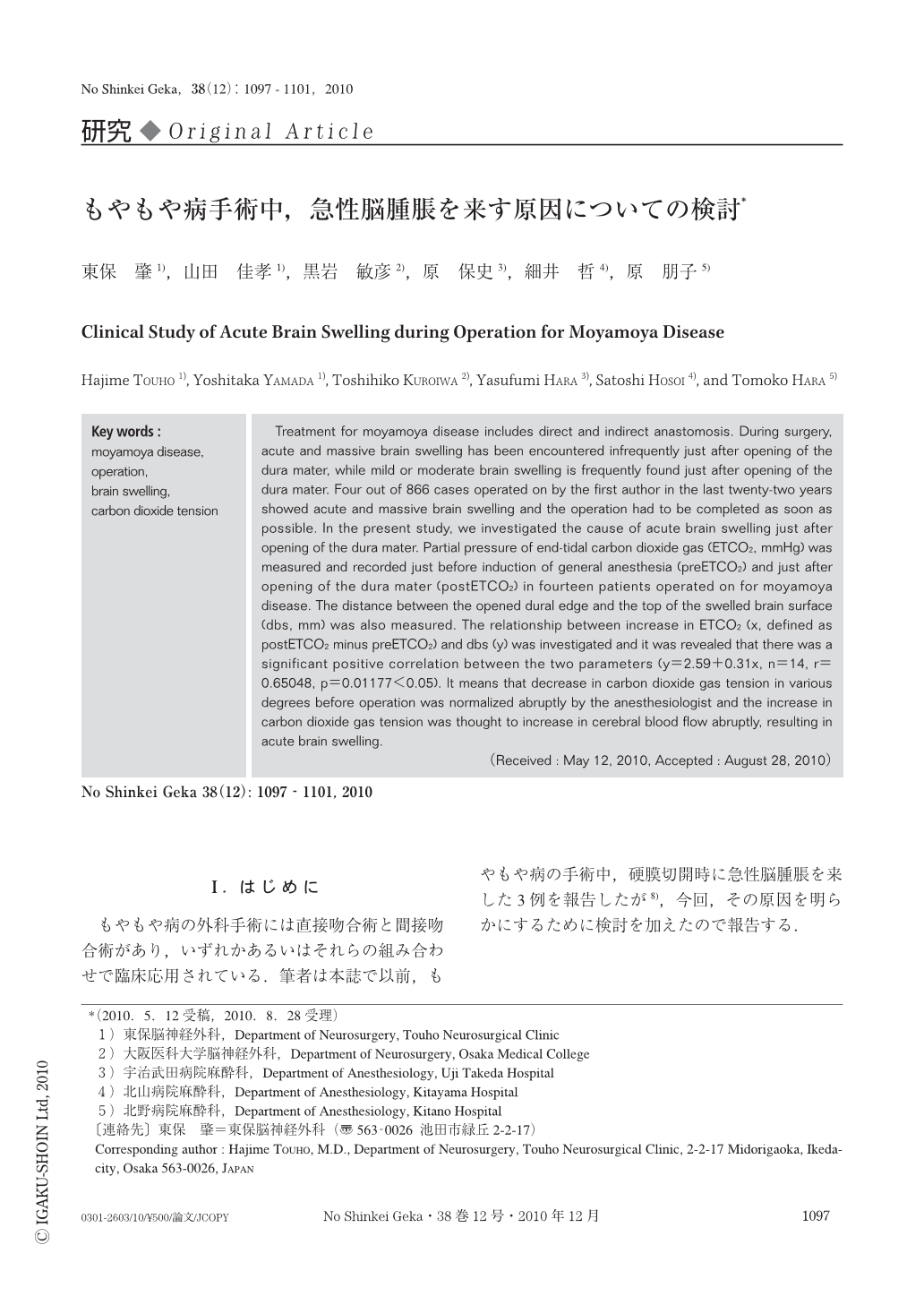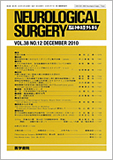Japanese
English
- 有料閲覧
- Abstract 文献概要
- 1ページ目 Look Inside
- 参考文献 Reference
Ⅰ.はじめに
もやもや病の外科手術には直接吻合術と間接吻合術があり,いずれかあるいはそれらの組み合わせで臨床応用されている.筆者は本誌で以前,もやもや病の手術中,硬膜切開時に急性脳腫脹を来した3例を報告したが8),今回,その原因を明らかにするために検討を加えたので報告する.
Treatment for moyamoya disease includes direct and indirect anastomosis. During surgery,acute and massive brain swelling has been encountered infrequently just after opening of the dura mater,while mild or moderate brain swelling is frequently found just after opening of the dura mater. Four out of 866 cases operated on by the first author in the last twenty-two years showed acute and massive brain swelling and the operation had to be completed as soon as possible. In the present study,we investigated the cause of acute brain swelling just after opening of the dura mater. Partial pressure of end-tidal carbon dioxide gas (ETCO2,mmHg) was measured and recorded just before induction of general anesthesia (preETCO2) and just after opening of the dura mater (postETCO2) in fourteen patients operated on for moyamoya disease. The distance between the opened dural edge and the top of the swelled brain surface (dbs,mm) was also measured. The relationship between increase in ETCO2 (x,defined as postETCO2 minus preETCO2) and dbs (y) was investigated and it was revealed that there was a significant positive correlation between the two parameters (y=2.59+0.31x,n=14,r=0.65048,p=0.01177<0.05). It means that decrease in carbon dioxide gas tension in various degrees before operation was normalized abruptly by the anesthesiologist and the increase in carbon dioxide gas tension was thought to increase in cerebral blood flow abruptly,resulting in acute brain swelling.

Copyright © 2010, Igaku-Shoin Ltd. All rights reserved.


